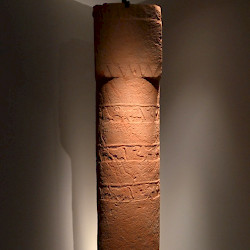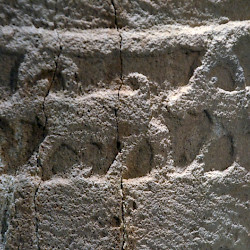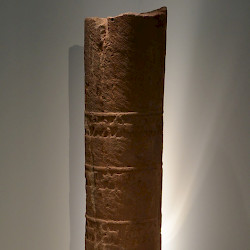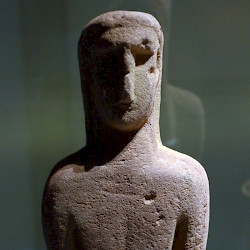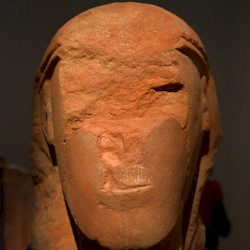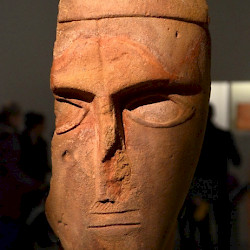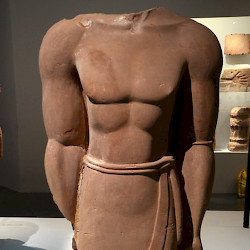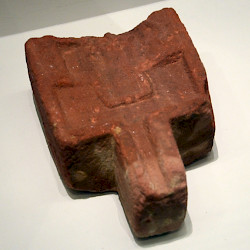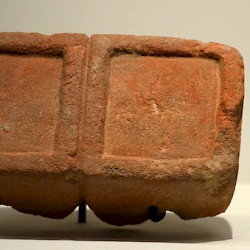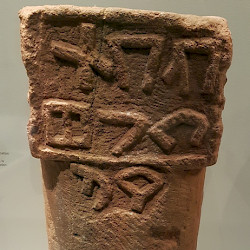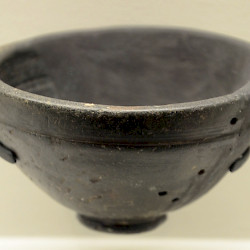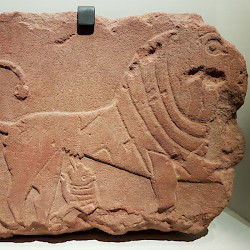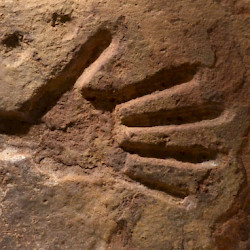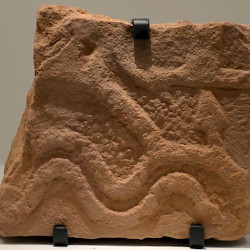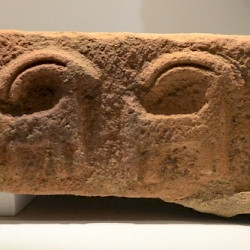Dedan
Q27242Dedan (Hebrew: דְּדָן): town in the Arabian desert along the Incense Route in the Al-‘Ula oasis. It was the capital of the Iron Age kingdoms of Dedan and Lihyan.
The Al-‘Ula Oasis
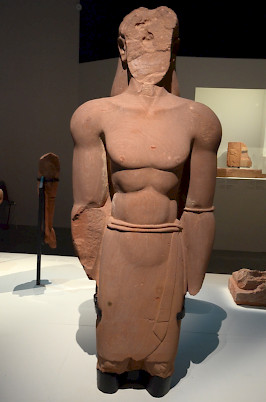
Al-‘Ula, as it is called today, is an oasis in the northwest of Saudi-Arabia. It is about forty kilometers long, surrounded in the west and east by lava-covered mountains. Several settlements have been investigated by archaeologists.
- In the center is Al-Khuraybah, ancient Dedan, the main settlement in the Al-‘Ula oasis.
- Across the valley is the western mountain sanctuary of Umm Daraj, dedicated to Dhu Ghaybah.
- Some fifteen kilometers to the north is Al-Hirj (or Mada'in Saleh), ancient Hegra, which would become a Roman fort.
- Twenty kilometers southeast of Al-Khuraybah is the late antique town of Qurh, which was important in the Middle Ages and is now called Al-Mabiyat.
Because there is little precipitation, the Al-‘Ula oasis has an arid climate, but there are flash floods. For centuries, people have been diverting water by digging qanats, underground water reservoirs, and canals with sluices. There have always been palm groves and orchards. Several crops are grown on the fields and shepherds can move their flocks between the settlements.
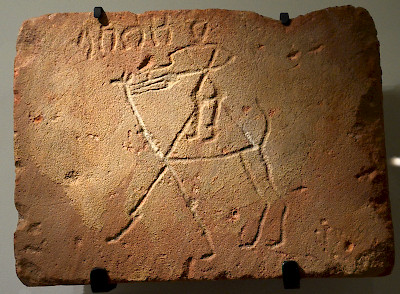
After the domestication of the dromedary, trade became important too. Situated between Yathrib (modern Medina) in the southeast and Petra in the north, the Incense Route passed through the oasis. This is why the Jewish prophet Ezekiel connects Dedan to Saba, a kingdom in Arabia Felix (Yemen), at the beginning of the Incense Route.note Another caravan route connected Al-'Ula to the Tayma and the Duma Oases, and Mesopotamia.
Prehistory
The Al-‘Ula oasis has been occupied since about 5,000 BCE and there are archaeological finds from the Stone Age and the Bronze Age. From these early periods, there are several stone structures that look like straight, stone walls, stretching over quite some distance. Other monuments from this early age are the stone tumuli (bazinas). Rock engravings show cattle, felines, ostriches, ibexes, dromedaries, and hunters.
The kingdom of Dedan
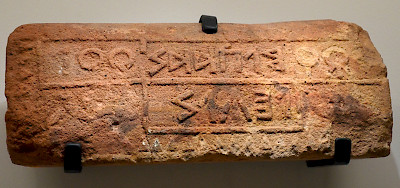
As indicated above, the main settlement in the Al-‘Ula oasis, Dedan, has been identified at a place that is now called Al-Khuraybah. The town was ruled by kings, who were in control of the central part of the oasis from the late ninth or early eighth century until the sixth of early fifth century. Three kings are known by name: Mata’il, his son Kabir’il, and Asi. The Bible mentions several trade products: ivory, ebony, and saddles.note
There must have been a crisis in the Dedanite kingdom when the Babylonian king Nabonidus, who had settled in the Tayma oasis in 549 BCE, attacked the Al-‘Ula oasis and killed the local ruler. Writing in more or less the same period, the Jewish prophet Ezekiel implies that the king of Edom was in control of Dedan.note It is likely that the kingdom of Dedan survived.
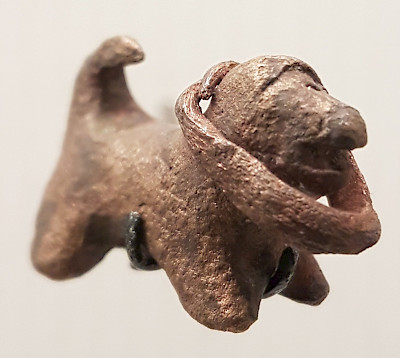
From this early age are several monuments. The nearby mountains served as quarries. There was a temple in the town, probably dedicated to the supreme god Dhu (“lord”) Ghaybah, the deity of water and agriculture.
Rock tombs and statues betray Egyptian influences. Inscriptions were written in the Dedanite script, which is one of the South-Semitic alphabets (a group of scripts still in use in Ethiopia to write Amharic and Ge’ez). Aramaic inscriptions are also known. Some appear to date from before the Persian age (539-332 BCE), but most of them are the product of the Achaemenid chancery.
It is not know how or when – although it must have been somewhere in the late sixth or early fifth century BCE – the kingdom of Dedan was replaced by the Lihyanite kingdom, which had the same capital.
The kingdom of Lihyan
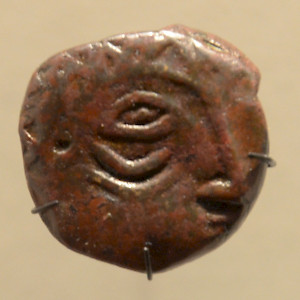
The Lihyanite kingdom was essentially a continuation of the kingdom of Dedan. About thirteen kings are known; they must have been ruling in the Al-‘Ula oasis between the late sixth or early fifth century and the first century BCE. The kingdom’s fortunes seem to have been in flux. An inscription in the Tayma oasis, written in the local script, suggests that a king Masudu of Lihyan was in control of this town; on the other hand, coinage of Hegra suggests that this town within the Al-‘Ula oasis had managed to become independent from the capital of Lihyan, Dedan.
Other sites from the Lihyanite period are the high place of worship dedicated to Dhu Ghaybah in Umm Daraj, the temple of al-Khutba at Tell al-Kathib (2½ kilometers northwest of Al-Khuraybah), and the canyon with inscriptions near Mount Ikmah.
All in all, some 400 formal inscriptions and 1600 graffiti have been discovered in the Al-‘Ula oasis. Many of them are in the Dedanic script and language, but Aramaic, Minaean (the language of the Incense Route), and Thamudic (from the north) are documented as well. The level of literacy must have been unusually high, although this may, after all, have been something we might expect from an important node in a trade network.
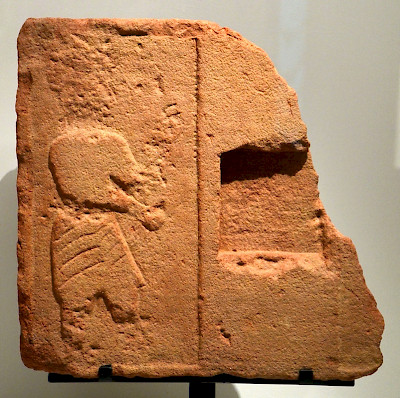
Among the inhabitants was a group of Minaeans, who came from Ma'in in the deep south, and appear to have had a permanent village somewhere in the oasis. They sacrificed to their own god Wadd. The Arab goddess al-‘Uzza, the Syrian deity Ba'al Šamem, the Edomite god Qaws, and a god named Han-Aktab ("the scribe") are also documented. Many people appear to have been pilgrims visiting the god Dhu Ghaybah, performing the zll ritual for the crops.
In the mid-first century BCE, Al-‘Ula was taken over by the Nabataeans from Petra. Their main settlement in the oasis was Hegra. Still, the former kingdom of Lihyan was not forgotten. The Roman author Pliny the Elder refers to the Gulf of Aqaba as to the Sinus Laeaniticus, the "Gulf of Lihyan".note
